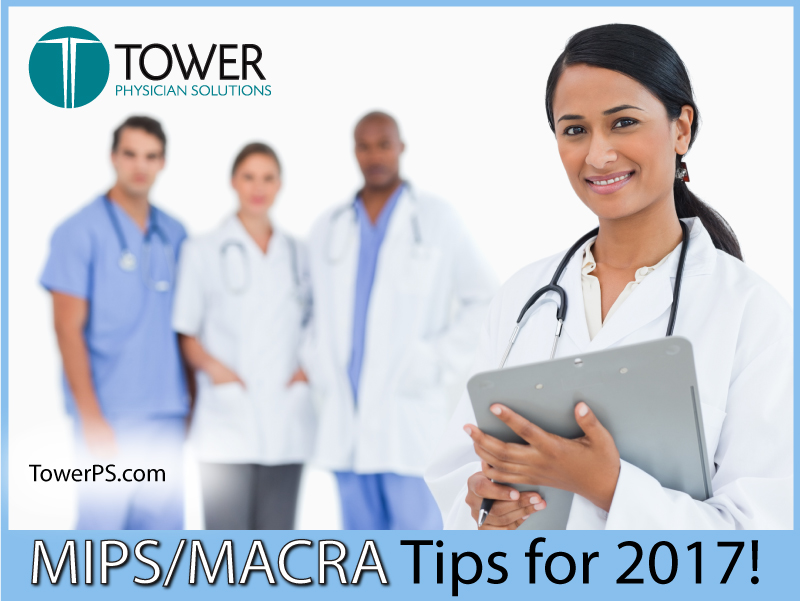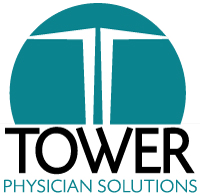Nephrology Today Blog

MIPS/MACRA Tips for 2017!
As with Meaningful Use, the earlier your practice starts participating in MIPS, the better the outcome will be in terms of future penalty avoidance and Medicare fee increases. Although 2017 is a reduced reporting “transition” year, it’s a great time to choose a few of the new patient care protocols that will soon be essential for MIPS participation and incorporate them into your workflow. There are over 200 clinical quality measures that you can select to report on, depending on your specialty and performance. Some that a small nephrology practice may want to start with are: E-prescribing through your certified EHR & Providing patient education from your EHR. Here are some tips for preparing your nephrology practice for MIPS/MACRA: TIP 1: Commit to Participate! The Centers for Medicare and Medicaid Services (CMS) have called 2017 a transition year.They are making it very easy for eligible clinicians to participate by creating what they call “Pick your Pace”. Pick your Pace essentially means you get to choose the level of participation that is right for you: Minimal level (test level) – by submitting some data, just enough to avoid the payment penaltiesPartial level (less than a full calendar year) – by submitting data not only to avoid the penalties but also to possibly earn bonus payments Full level (a full calendar year) – by submitting data not only to avoid the penalties but also to possibly earn bonus payments.Our recommendation: Participate at the Full level. By being proactive today, you maximize your opportunity to earn positive payment adjustments in 2018. TIP 2: Attest as a Group or an Individual?Eligible clinicians have the option of attesting and being rated as either a Group or as an Individual. Individuals are defined as having an individual National Provider Identification (NPI) and Tax Identificakjtfvtion Number (TIN). A Group is defined as many NPIs that bill under one TIN. To determine which option is best for your agency, you will need to conduct some analysis of your agency’s performance based on the quality of care. The question to be answered is: “Is the total (i.e., the performance of the group) greater than the sum of its parts (i.e., the performance of the individuals)?” If overall, your agency would fare better attesting as a group on quality outcome measures, then the Group option is right for you. Otherwise, choose the Individual option. Our recommendation: Once you determine your attestation option, the methods differ. Take the time to conduct the analysis. This is an important strategic business decision that could have cost, revenue and scheduling implications. TIP 3: Select Quality Measures that Best Showcase Your PracticeThere are over 200 Quality Measures available for the Quality Category of MIPS. With a wide variety of quality measures from which to choose, you must attest to six (6) total measures, one (1) of which must be an outcome measure. In choosing your measures, select those that best showcase the quality of services you provide. You also have an additional option to attest to specialty measure groups. There are thirty distinct specialty measure groups including one for mental/behavioral health. When committing to the measures you will collect and report on, keep in mind you can earn, you can earn up to 10% total in bonus point: Two (2) bonus points for each additional outcome or patient experience measure that you report One (1) bonus point for each additional high priority measure that you report. This is good news! Quality Measures are an excellent category where you can earn bonus points. Why? Your eligible clinicians are probably already carrying out many of the workflows required to capture the data for the measures. Our recommendation: Get credit for what you are probably already doing. TIP 4: Operationalize Your Clinical Improvement Activities (CIA) The Improvement Activities Category is a new initiative included in MACRA MIPS that was not part of the previous Physician Quality Reporting System (PQRS) quality program. This new performance category will reward your eligible clinicians for services they deliver that focus on these key areas: Care coordination Engagement of the patient (or their representative) Patient safety. When you look through the list of 93 Improvement Activities, you should look for activities that reflect some of the processes you already have in place. You should also identify activities you want to add to your practices that will bring true value to your agency and your consumers. Most participating eligible clinicians will need to attest that they have completed up to four (4) of the improvement activities for a minimum of 90 days. As an example, below are four (4) improvement activities that support integrated care and care coordination practices:/
Care coordination agreements that promote improvements in patient tracking across settings Care transition documentation practice improvements Care transition standard operational improvements Implementation of use of specialist reports back to referring clinician or group to close the referral loop.Our recommendation: Select activities that both reflect your current practices and will expand your clinical improvement program. And if you do not have a formalized improvement program, no problem. You now have an ideal opportunity to start organizing your current efforts into a formal clinical improvement program. Win-win! TIP 5: Go Beyond the Advancing Care Information (ACI) Category Base ScoreIf you are a provider who previously participated in the EHR Incentive Program for Meaningful Use (MU), you are already practicing and likely have been attesting to more than twice the number of measures now required for ACI. This is good news! You should definitely plan to attest to more than just the base levels for the ACI category. The eligible clinician must attest to only four (4) or five (5) measures depending on which version (2014 or 2015) of CEHRT (Certified Electronic Health Record Technology) you are using to meet the base level requirements of ACI. Here is more good news for eligible clinicians:Earn extra credit for reporting up to nine (9) measures for 90 consecutive days (performance score). Earn bonus points for reporting public health and clinical data registry measures (bonus score). Earn bonus points for using a CEHRT to complete the Improvement Activities referenced in Tip 4 above (bonus score). Our recommendation: At a minimum, participate at the performance level and earn extra points by attesting to more measures than what is required for base level participation. TIP 6: Enlist the Help Of Tower Incorporating MIPS protocols into your practice workflow takes knowledge of the regulations and careful planning for changes in practice operations. If you do not have the staff time this extra work will require, trust the experienced MIPS experts at Tower Physician Solutions. We will build a workflow plan for implementing the new measures into your daily operations and identify those which might be performed by staff members rather than physicians. Our recommendation: Tower Physician Solutions has experienced professionals on staff who can guide your practice through the process. Start preparing for ACI participation as soon as possible so you can take advantage of MIPS opportunities. Contact Tower for a free practice assessment. |
